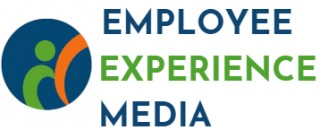
Understanding the Importance of DEI in Candidate Experience
Recognizing the Need for Diversity, Equity, and Inclusion
Understanding the importance of diversity, equity, and inclusion (DEI) in candidate experience is crucial for organizations aiming to thrive in today's competitive job market. The integration of DEI initiatives is not only about compliance or checking boxes; it significantly enhances the overall candidate experience by making it more inclusive and fair. A DEI-focused approach in the recruitment process helps companies attract top talent by creating an environment that values diverse perspectives and ideas. It reinforces the belief that every candidate, regardless of their background, should have a fair opportunity in the hiring process. This approach not only fosters a more inclusive culture but also aligns with the broader societal push towards greater equity and inclusion. Employers are increasingly recognizing that a commitment to diversity equity can provide tangible benefits. Diverse teams bring a variety of viewpoints and problem-solving skills that can lead to innovative solutions and improved company performance. Moreover, a transparent and inclusive recruitment process helps in reducing unconscious bias, ensuring that candidates are evaluated based on their skills and potential rather than preconceived notions. By embedding DEI principles into their candidate experience, organizations not only improve their recruitment process but also strengthen their employer brand and appeal to job seekers. This commitment to diversity, equity, and inclusion speaks volumes about a company’s values and can be a deciding factor for candidates as they consider their options. Further insights into how DEI can optimize the hiring process can be explored by examining the role of professionals dedicated to this domain. To understand more about how specialized roles contribute to DEI efforts within an organization, you can explore the role of a community and identity operations specialist. As companies continue to evolve their approach to recruitment, recognizing the need for diversity, equity, and inclusion remains a critical step in enhancing the candidate experience.Identifying Barriers to an Inclusive Candidate Experience
Recognizing and Overcoming Obstacles in the Path to Inclusion
Creating an inclusive environment for candidates during the recruitment process is crucial for ensuring diversity, equity, and inclusion (DEI) in any organization. It's essential to first identify the barriers that may prevent an inclusive candidate experience. By recognizing these obstacles, companies can take proactive steps to foster a more welcoming hiring process for all job seekers. One of the primary barriers is unconscious bias. Despite best intentions, unconscious bias can creep into the recruitment process at various stages, from job descriptions to interviews. This bias may unintentionally favor certain candidate profiles, skewing the perception of who constitutes a "top talent." Addressing these biases requires a commitment to ongoing DEI initiatives and training for recruitment teams. Another challenge is the limited reach of talent acquisition efforts. Organizations might inadvertently overlook diverse talent pools due to constrained recruiting networks or traditional hiring methods. Expanding recruitment efforts to diverse job boards, partnering with community organizations, and considering non-traditional qualifications can help increase diversity in hiring. Equity in job descriptions and during the hiring process also plays a significant role in shaping a balanced candidate experience. Employers need to ensure that job descriptions are free from gendered or exclusive language and that they accurately reflect the skills required without unnecessary qualifications that may deter diverse applicants. Analyzing and understanding data through applicant tracking systems is vital for identifying stages where potential biases might exist. Companies can use this data to measure the effectiveness of their DEI recruitment efforts and make necessary adjustments. To foster true inclusion DEI in the workplace for candidates, organizations need to create a culture of openness and accountability. Inviting feedback from candidates and employees about their experience can offer invaluable insights into the company's culture and procedures. Implementing changes based on this feedback not only enhances DEI recruitment but also establishes trust and credibility with job candidates. For more insights on enhancing inclusion strategies for effective candidate meetings, you can explore this resource. It's important to remember that achieving diversity inclusion is an ongoing journey that requires continuous evaluation and improvement.Strategies for Building a Diverse Candidate Pool
Building a Rich and Diverse Candidate Pool
To build a successful and diverse candidate pool, organizations must actively prioritize diversity, equity, and inclusion (DEI) in their recruitment strategies. This plays a significant role in enhancing the overall candidate experience and drawing in top talent from various backgrounds. A well-rounded approach to dei recruitment involves several key practices that hiring teams can implement.
- Optimize Job Descriptions: Ensuring that job descriptions are inclusive and free from bias is a critical step. Language that appeals to a broad audience and avoids technical jargon can help attract a wider range of applicants.
- Diversify Sourcing Channels: Using varied recruitment platforms can also contribute to a more diverse applicant pool. Consider engaging with community organizations, professional associations, and affinity groups to reach potential candidates from different demographics.
- Develop DEI-Focused Recruitment Advertising: Crafting job advertisements that highlight the company's commitment to DEI initiatives and an inclusive workplace can resonate with diverse job seekers.
- Leverage Technology for Bias Mitigation: Tools like applicant tracking systems (ATS) with embedded bias detection capabilities can help filter out any unconscious biases, ensuring equity in the hiring process.
- Encourage Employee Referrals: Employees can be strong advocates for building a diverse workforce. Encouraging them to refer candidates can diversify talent pipelines, especially if current staff already reflect varied backgrounds.
These strategies aren't isolated efforts but part of a cohesive approach to creating an inclusive candidate experience. Implementing them can help organizations better align their recruitment processes with their DEI goals. Furthermore, understanding diverse employment contexts can bolster an organization's ability to connect with a broader candidate base.
Creating an Equitable Recruitment Process
Designing a Fair and Transparent Recruitment Framework
Creating an equitable recruitment process is a cornerstone of enhancing diversity, equity, and inclusion (DEI) in the candidate experience. A fair recruitment framework ensures that all candidates, regardless of their background, have equal opportunities to showcase their skills and talents. This involves crafting job descriptions that are free from bias and using inclusive language that welcomes a diverse range of applicants.
Implementing Bias-Free Evaluation Techniques
Unconscious bias can significantly impact the recruitment process, often leading to the exclusion of diverse talent. To combat this, organizations can implement structured interview techniques and standardized evaluation criteria. This helps ensure that all candidates are assessed based on their skills and qualifications rather than subjective perceptions. Utilizing data-driven approaches can also aid in minimizing bias and promoting equity inclusion throughout the recruitment process.
Leveraging Technology for Equitable Hiring
Technology plays a crucial role in fostering an inclusive recruitment process. Applicant tracking systems (ATS) can help streamline the hiring process by ensuring that each candidate is evaluated consistently. Additionally, AI-driven tools can assist in identifying and mitigating biases in job descriptions and candidate evaluations. By leveraging technology, organizations can enhance their DEI efforts and attract top talent from diverse backgrounds.
Promoting a Culture of Continuous Improvement
Creating an equitable recruitment process is not a one-time effort. It requires ongoing commitment and regular assessment to ensure its effectiveness. Organizations should actively seek feedback from candidates and employees to identify areas for improvement. By fostering a culture of continuous improvement, companies can adapt their recruitment strategies to better align with DEI initiatives and build diverse teams that thrive in an inclusive workplace.
Fostering an Inclusive Interview Experience
{\"result\": \"
Creating a Welcoming Space for Interviews
Fostering an inclusive interview experience is a pivotal step in promoting diversity, equity, and inclusion throughout the candidate journey. As organizations strive to embrace diverse talent, it's crucial to ensure that interviews reflect the diverse and inclusive values intended by the company.
To lay the groundwork for an inclusive experience, organizations can consider the following strategies:
- Implementing Unconscious Bias Training: Providing training for interview panels ensures that unconscious biases are acknowledged and managed, promoting fairness and equity in the evaluation of all candidates. This practice can minimize the risk of biases affecting hiring decisions and lead to a more objective recruitment process.
- Crafting Inclusive Interview Questions: Develop questions that are equitable and non-discriminatory. Tailored questions that focus on skills, experience, and problem-solving abilities can help candidates demonstrate their capabilities in an unbiased manner.
- Ensuring Diverse Perspectives in Panels: Whenever possible, creating interview panels with diverse members can enhance the decision-making process and make candidates feel more supported and understood.
Encouraging Open Communication
An open line of communication between candidates and the recruitment team can greatly improve the candidate experience. Encouraging questions and clarifying doubts not only empowers candidates but also shows that the organization values transparency and open dialogue. Offering feedback after interviews further enhances this transparency, providing insights for candidates to grow and leaving them with a positive impression of the organization.
Organizations should also consider using data from applicant tracking systems to analyze patterns that could indicate systemic biases in the hiring process. This approach helps in continuously refining practices to better reflect the company’s diversity and inclusion goals. Inclusive interview experiences are not only beneficial for candidates but also essential for organizations aiming to cultivate a genuine culture of diversity and equity in their talent acquisition efforts.\"
}
Measuring and Improving DEI in Candidate Experience
Evaluating the Candidate Experience for Equity and Inclusion
To effectively measure and enhance Diversity, Equity, and Inclusion (DEI) within the candidate experience, it is essential to establish robust evaluation mechanisms. These mechanisms should be designed to capture the nuances of how candidates perceive your recruitment process. Here are some key considerations for measuring and improving DEI in candidate experience:- Data Collection and Analysis: Gather data throughout your hiring process, from initial applicant tracking to final job offers. Analyze this data to identify patterns that might indicate potential biases or disparities. For example, track diversity metrics such as the demographics of candidates at various stages of recruitment.
- Surveys and Feedback: Implement feedback loops with both candidates and hiring teams. Surveys can provide insights into how candidates perceive your organization's commitment to DEI and identify any areas for improvement in your recruitment process.
- Bias Audits: Conduct regular audits of your recruiting procedures to highlight unconscious biases that may exist. This can include examining job descriptions, interview questions, and the overall candidate experience to ensure they promote diversity and inclusion.
- DEI Benchmarks and KPIs: Establish DEI benchmarks and key performance indicators (KPIs) to track the effectiveness of your initiatives. This helps in setting clear goals and measuring the impact of DEI efforts on acquiring diverse talent.
- Continuous Improvement Strategies: Utilize a continuous feedback loop to refine and enhance your DEI initiatives. Regularly update your recruitment process and policies to reflect learnings and address any gaps identified in your evaluations.













